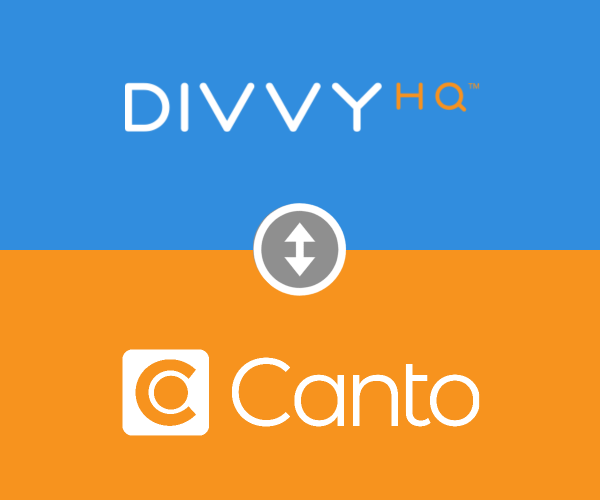8 Real Benefits of Digital Asset Management (DAM) Systems
Enterprise content teams produce LOTS of assets, and organizing, storing, and managing them can be cumbersome. However, having a single asset storage solution makes this entire situation more manageable. Digital asset management systems are designed specifically for this purpose.
With such a system for your digital assets, you have more visibility and an easy way to search for assets. In turn, it can improve your content workflows and ensure accessibility for your staff. If you’re not sure about the benefits of digital asset management, keep reading to discover what you can gain.
What Is a Digital Asset Management System?
Image: Screenshot of Canto DAM integration with DivvyHQ
A digital asset management system is software that helps users store, organize, find, and share their digital content portfolio. Such software enables all stakeholders to have access to this and be able to search the repository to locate what they need.
This functionality can be a standalone system or be part of a content marketing platform. Typical asset types held there include images, graphic design files, videos, presentations, documents, and more.
So, why adopt a digital asset management system? Let’s dive into the benefits.
Quick, Easy File Access
Do your content team or other contributors waste time on the “hunt” for assets? According to a survey, 54 percent of U.S. office professionals said they spend more time searching for documents than responding to emails. Further, 57 percent ranked this as a top three problem.
This friction and time drain aren’t conducive to hitting your content throughput. It can also leave people frustrated. These problems no longer exist when all your assets are in a single searchable repository. Everyone can be more productive and less stressed.
Accelerating Content Production
Your content strategy defines your objective on the quantity of content. Within an enterprise, it can be high-volume. While you never want to rush this, streamlining workflows with the support of a digital asset management system can help.
You may find that reviews and approvals are a roadblock. When your asset repository is part of a content marketing system, you’ll be able to be more agile in workflow approval functionality. It can remove manual work and bring those outside the content marketing department into the workflow. You can expedite brand and legal reviews with this cross-collaboration tool.
Extending the Value of Assets with Repurposing or Updating
Once you publish, promote, and analyze a content project, it can have a longer useful life. It’s easier to do with evergreen content, but a digital asset management system helps you repurpose and update what doesn’t fall in this category.
Often, you’ll need to adapt some part of the content, from stats and figures to changing the keyword. You may also want to repurpose content, such as taking a blog and creating an explainer video or infographic.
It’s much easier to operationalize this aspect with a central repository. You can also easily look back at your library to identify projects that need an update or reimagination. Search by topic, format, date published, or other criteria.
Ensuring the Use of the Most Current Content
A digital asset management system enables stakeholders to retrieve content when they need it. Again, going back to having one repository makes this easier. It also ensures that users have the most current content. This applies to users outside your team — sales, product managers, executives, customer support, etc.
You’re their content producers, and they need what you create to win new business, take care of customers, and build partnerships. The chance of these people sharing outdated content is much higher when there’s no governance. It could also cause a lot of problems. If statistics or pricing isn’t accurate, that erodes trust. Such an event could also represent non-compliance for those highly regulated industries (e.g., healthcare, finance).
No More Back-and-Forth Email Threads
Content collaboration isn’t always easy. Going back and forth on emails on edits and approvals. The conversation is happening outside the actual content asset. That means you still have to insert all the comments and corrections. It’s a big time waster and can lead to errors.
Using a digital asset management system allows you to share documents, track changes securely, and control user access. This makes it so much easier to collaborate and document the editing process.
Your Assets Are Safe and Secure
Another benefit of a digital asset management system is mitigating the risk around “losing” confidential or proprietary files. Everything is in one place, and only those with a login can access it. It has all the security requirements, including two-factor authentication, to prevent unauthorized access.
Having your library here also means that things don’t get lost. It’s in the cloud, not on a hard drive or personal folder.
Consolidation of Tools Reduces Costs and Complexity
If you’re using multiple applications to manage content storage, sharing, and collaboration, your team plays the swivel chair. They have to jump from system to system, and that compounds complexity. It’s inefficient and difficult to scale. Plus, you’re paying user fees across multiple systems.
A digital asset management system allows you to consolidate all these needs into one place. By doing so, you improve usability for your team and can scale this out across your enterprise. Further, you’ll also realize cost savings when you go from many to one.
Breaking Down Silos
Another consequence of a digital asset management system is the ability to break down silos across your team and the greater enterprise. This is a challenge for many, with 38 percent of content marketers calling it such.
Content isn’t behind a locked door. There’s no division between content creation and the objectives and key messaging of a company. Silos can do a lot of harm to companies, and this is one more way to avoid them.
Ready to Reap the Benefits of a Digital Asset Management System?
You can achieve these advantages by deploying or upgrading to a robust digital asset management system. There are lots of great platforms on the market that are designed and priced to serve various industries and company sizes.
Quick note about “upgrading”. When we talk about upgrading, we are typically referring to graduating from many of the popular cloud file sharing platforms like Box, Dropbox, or OneDrive, or an internal file server that you may currently be using to store your various company files. While these options serve the basic needs of storing files, they lack many of the key functions that real digital asset management platforms provide for content teams. Being able to retrieve past content assets based on a quick search and filtering by content format, file type, and keywords is really where the efficiencies are realized.
Is DivvyHQ a Digital Asset Management System?
The short answer is: kinda. When compared to the core features of the various platforms that lead the digital asset management software category, there is certainly a lot of overlap in functionality, but there are also several differences. In Divvy, digital assets are stored within/tied to content projects and campaigns. Therefore, searching for content assets doesn’t just return stored assets/files. Search results include the actual projects (and all their associated data) that generated the assets.

So in many cases, enterprise content teams need both types of platforms. And wouldn’t it be smart to choose a platform that has native integrations with various DAM platforms? Just recently, we announced our latest integration with Canto, one of the top DAM platforms on the market.
You’ll experience the best results when choosing platforms that are designed specifically for marketing, communications, and content teams. That’s what the Divvy platform delivers. You can manage digital assets and so much more. Give it a try for free by starting a trial.


